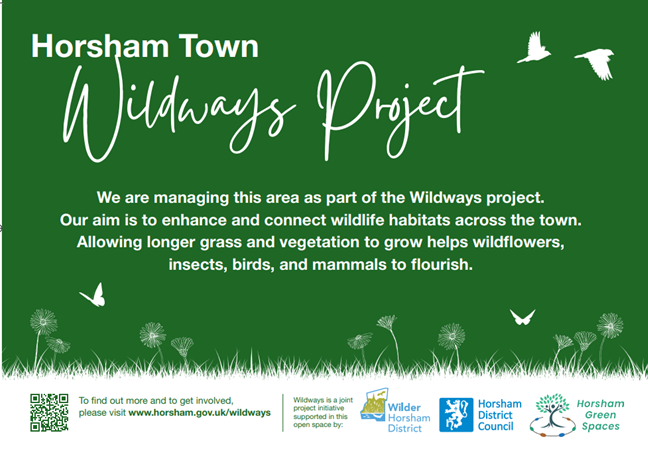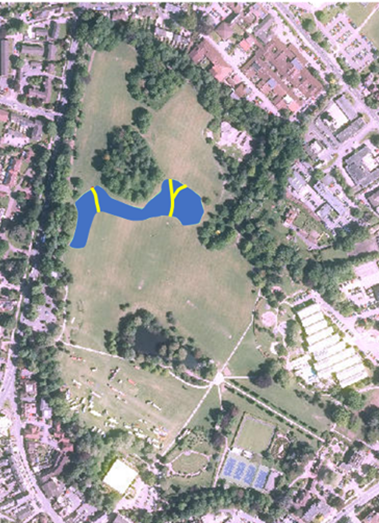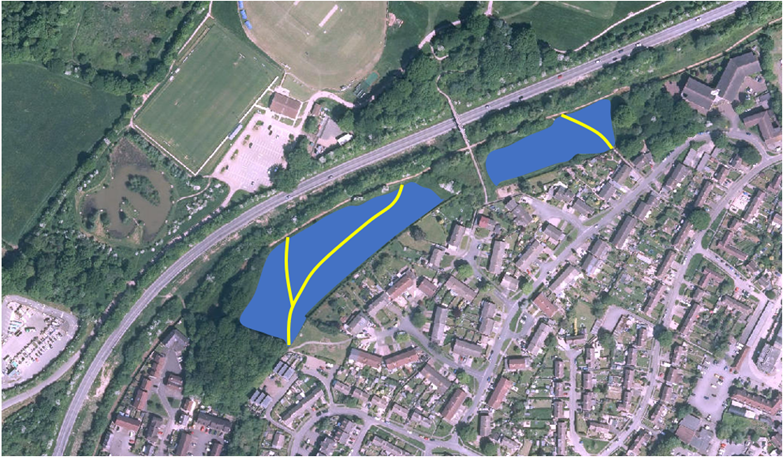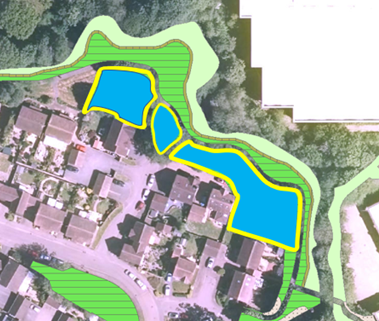Wildways Project
In this section
Wildways on council-owned land
In conjunction with our established meadow areas, which extend across the district, in 2024 we amended the mowing regime in selected areas at 21 sites across Horsham town.
Instead of cutting the grass regularly, it will be left to grow throughout the summer. This will then be cut and collected in late August / early September with the arisings (grass clippings) being removed and composted.
Residents should be assured that only selected areas at each of the sites are being used and we will continue to mow pathways and retain short amenity grass for other uses, be that walking, sport, play, picnicking or simply having somewhere to relax.
By cutting selected areas of the grass less frequently, the soil becomes less fertile, and this enables the wildflowers to out-compete the grass, grow and set seed. After a number of years, the wildflowers become well established and look more abundant.

The benefits of creating meadow areas
There are many benefits including;
- Plants and fungi that are native to the UK will begin to re-establish themselves, bringing with them a wonderful variety of invertebrates, birds, amphibians, reptiles and mammals
- It is good for the human senses, bringing different colours, scents and wildlife in a space that was previously just a monoculture of grass
- It helps to improve the biodiversity of the District as a whole
- It reduces the carbon impact of our work as a council

The parks and open spaces within Horsham town where selected areas will be left to grow longer, are listed below. These areas will be identified with the Wildways project signage (shown above).
| Horsham Town | |
|---|---|
Barrackfield | Horsham Park |
Sites marked with an * will receive an earlier spring cut in June, in line with the current land management practises.
Those shown in italics are existing meadow area site locations
The maps below give examples of our current meadow areas, showing the mown path and giving an indication of the areas given over to longer grass.

Horsham Park

Billingshurst Bypass

Tanbridge Park
| Sites across the District | |
|---|---|
| Billingshurst By-pass College Road, Southwater Woodlands Walk, Mannings Heath Deer Way, Henfield Pulborough Village Hall | Fletchers Croft, Steyning Meadowside, Storrington Penlands Vale, Steyning St Andrews Churchyard, Steyning |
In addition, many areas at our countryside sites including Southwater Country Park, Warnham Local Nature Reserve and Chesworth Farm have been managed in this way for many years, with visitors and residents enjoying the different habitats they provide.
Frequently Asked Questions
In our large open spaces, only small selected areas are being left to grow. There will still be plenty of space for all our visitors to enjoy other leisure activities, play sport and relax.
Access paths will be mown into the longer grassed areas, so everyone can experience them close up if they choose to do so.
We know many dogs like to explore different habitats and we acknowledge that dog fouling in longer grass may be harder to detect.
Some residents may be concerned about ticks in long grass, however these are mainly found in areas close to livestock or where deer are present. The majority of the trialled sites are within residential areas, away from livestock and deer, therefore the risk is deemed minimal. It is of course always advisable to regularly groom pets thoroughly: making sure you check the inside of the ears, around the eyes, on the chin and around the muzzle, as well as between pads and toes.
We would encourage where possible dogs remain on the cut areas and shorter grasses as this will make picking up after pets easier and help protect the wildflowers from being trampled.
Sadly, littering by a small percentage of our visitors is an issue in many of our parks and open spaces and we continue to discourage this in all locations. We do not believe that having areas of longer grass makes this issue worse.
Prior to the annual cut at the end of August, the areas will be litter picked and the waste monitored.
We have been trialling this initiative for its environmental benefits, not economic savings.
Following the cut in August, when the grass is collected, there are disposal costs. These are comparative to the costs of continually mowing throughout the season.
